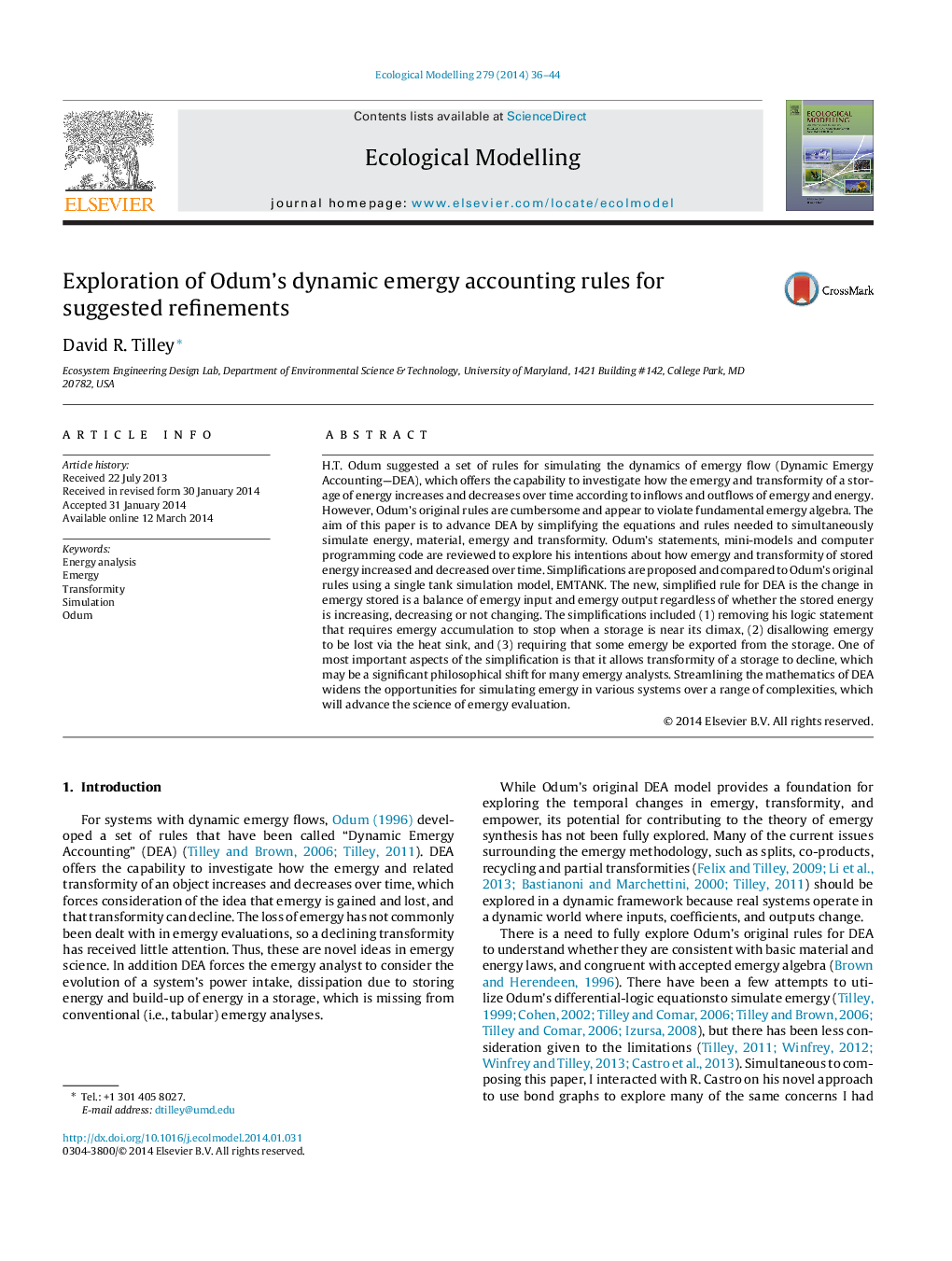| Article ID | Journal | Published Year | Pages | File Type |
|---|---|---|---|---|
| 4375972 | Ecological Modelling | 2014 | 9 Pages |
•Odum's original rules for simulating emergy and transformity dynamics were explored.•The rules were inconsistent with emergy algebra and cumbersome to use.•A refined rule: The change in emergy stored is a balance of emergy input and output.•The rule applies regardless of whether stored energy is increasing, decreasing or not changing.•Emergy is never removed from storage via dissipation, only export.
H.T. Odum suggested a set of rules for simulating the dynamics of emergy flow (Dynamic Emergy Accounting—DEA), which offers the capability to investigate how the emergy and transformity of a storage of energy increases and decreases over time according to inflows and outflows of emergy and energy. However, Odum's original rules are cumbersome and appear to violate fundamental emergy algebra. The aim of this paper is to advance DEA by simplifying the equations and rules needed to simultaneously simulate energy, material, emergy and transformity. Odum's statements, mini-models and computer programming code are reviewed to explore his intentions about how emergy and transformity of stored energy increased and decreased over time. Simplifications are proposed and compared to Odum's original rules using a single tank simulation model, EMTANK. The new, simplified rule for DEA is the change in emergy stored is a balance of emergy input and emergy output regardless of whether the stored energy is increasing, decreasing or not changing. The simplifications included (1) removing his logic statement that requires emergy accumulation to stop when a storage is near its climax, (2) disallowing emergy to be lost via the heat sink, and (3) requiring that some emergy be exported from the storage. One of most important aspects of the simplification is that it allows transformity of a storage to decline, which may be a significant philosophical shift for many emergy analysts. Streamlining the mathematics of DEA widens the opportunities for simulating emergy in various systems over a range of complexities, which will advance the science of emergy evaluation.
